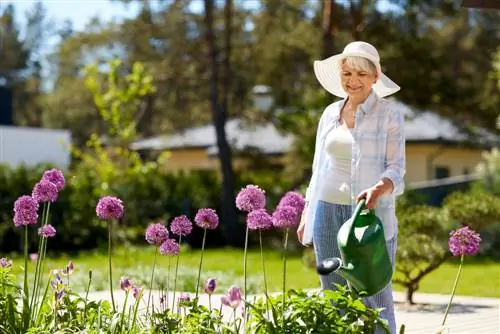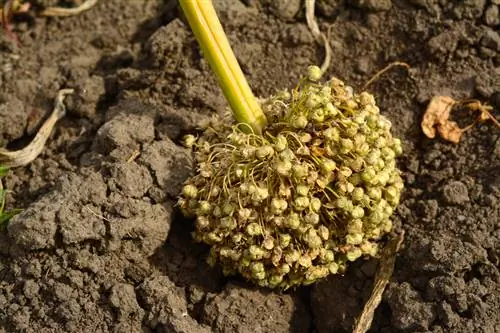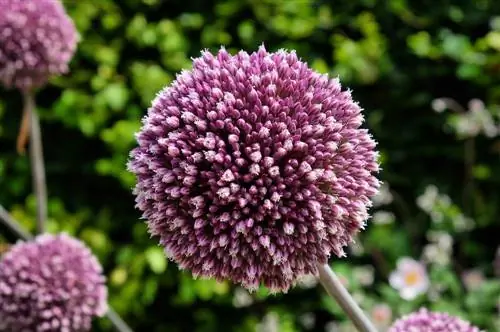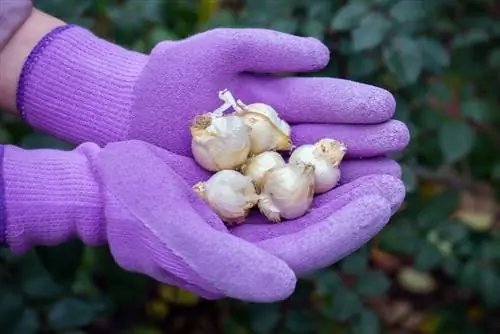- Author admin [email protected].
- Public 2023-12-16 16:46.
- Last modified 2025-01-23 11:21.
The ornamental onion is actually not difficult to care for, at least not if it feels comfortable in its place. Plant it in a suitable location with suitable conditions and it will thank you with lush flowers.
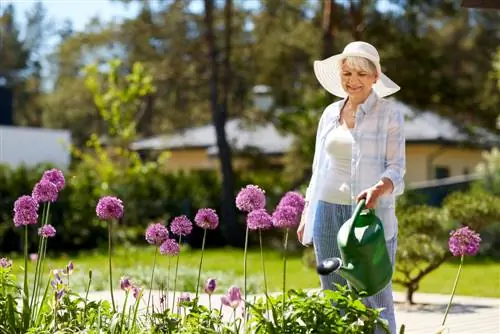
How do you properly care for ornamental garlic (Allium)?
Allium care consists of a sunny location, autumn planting with 5 cm of sand, regular fertilization until flowering, autumn pruning and winter hardy support. Grown in a pot, it thrives in a bright location and well-drained soil.
Planting ornamental onions
Before you plant the bulbs of your ornamental onion in the pre-drilled planting hole, check the bulbs for mold and fill the hole with a layer of sand about five centimeters thick. This protects the leeks from frost in winter and at the same time improves the permeability of the soil.
Ideally, you should plant your ornamental garlic in autumn, between September and the first frost. Ornamental garlic can also be grown in a container, but always needs a bright, sunny location with well-drained soil. You can also plant wild garlic or the very similar but yellow-flowering golden garlic in partial shade. They also thrive in slightly moist soil.
Watering and fertilizing ornamental onions
Most of the time, ornamental garlic does quite well without additional watering, but is happy to accept this during a longer dry period. This is especially true for giant leeks during the flowering period in summer. A little organic fertilizer (€23.00 on Amazon) or mature compost is also welcome in spring.
Cut ornamental onions
In autumn, when all the leaves have turned completely yellow, cut your ornamental onion just above the ground. For very early-flowering varieties, such as wild garlic, you can also prune them in the summer.
Ornamental onion in winter
Ornamental garlic is hardy and does not need any special care in winter. However, waterlogging should also be avoided during this time, otherwise the onion will begin to rot. Stop fertilizing immediately after flowering. It's not necessary until spring.
The most important things in brief:
- plant in autumn
- fill the planting hole with approx. 5 cm of sand
- Location: full sun if possible
- can also be grown in a bucket
- fertilize regularly from spring until flowering
- cut just above the ground in autumn
Tip
With little care, you can enjoy very decorative “flower balls” in your garden in early summer.

